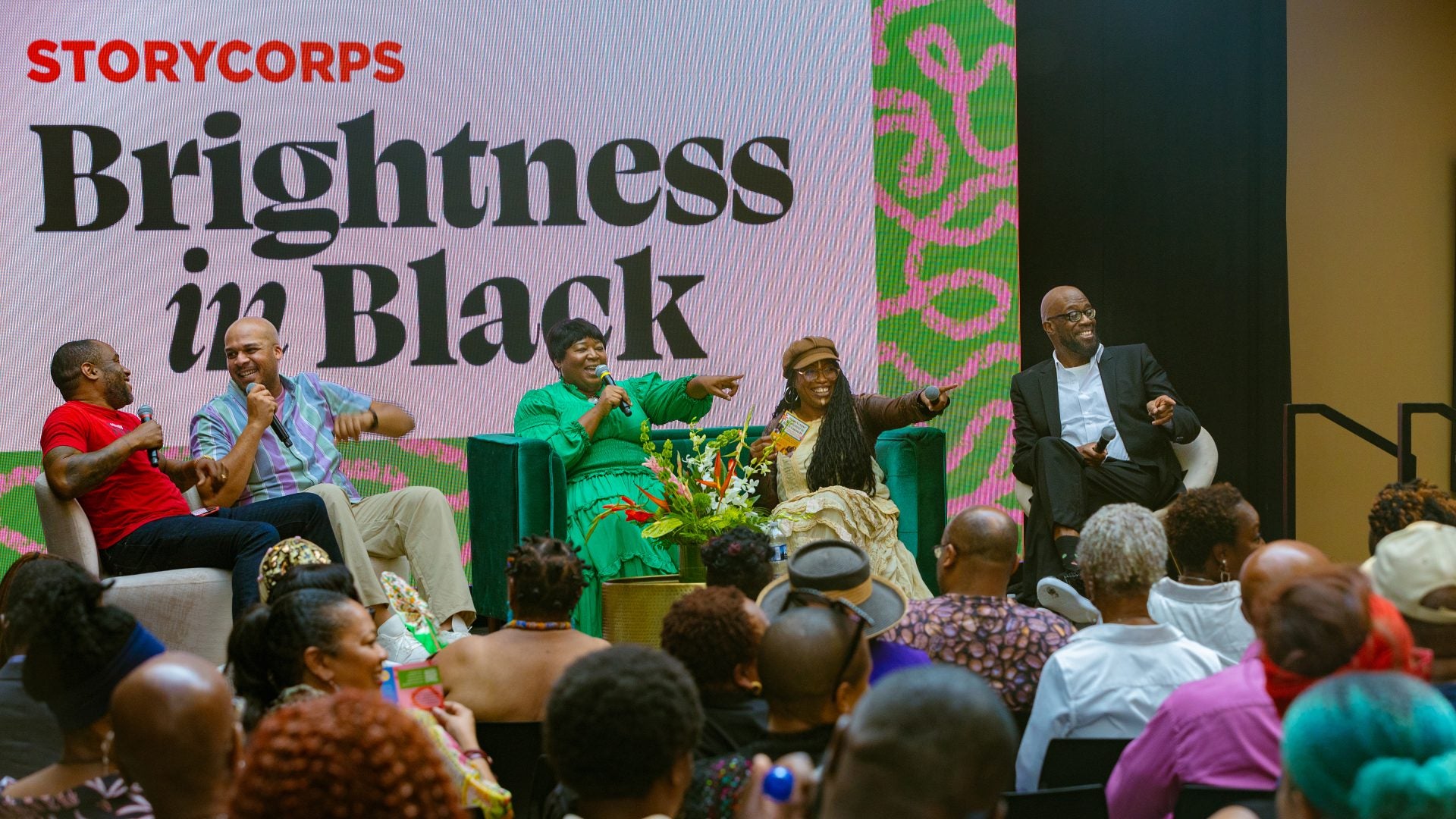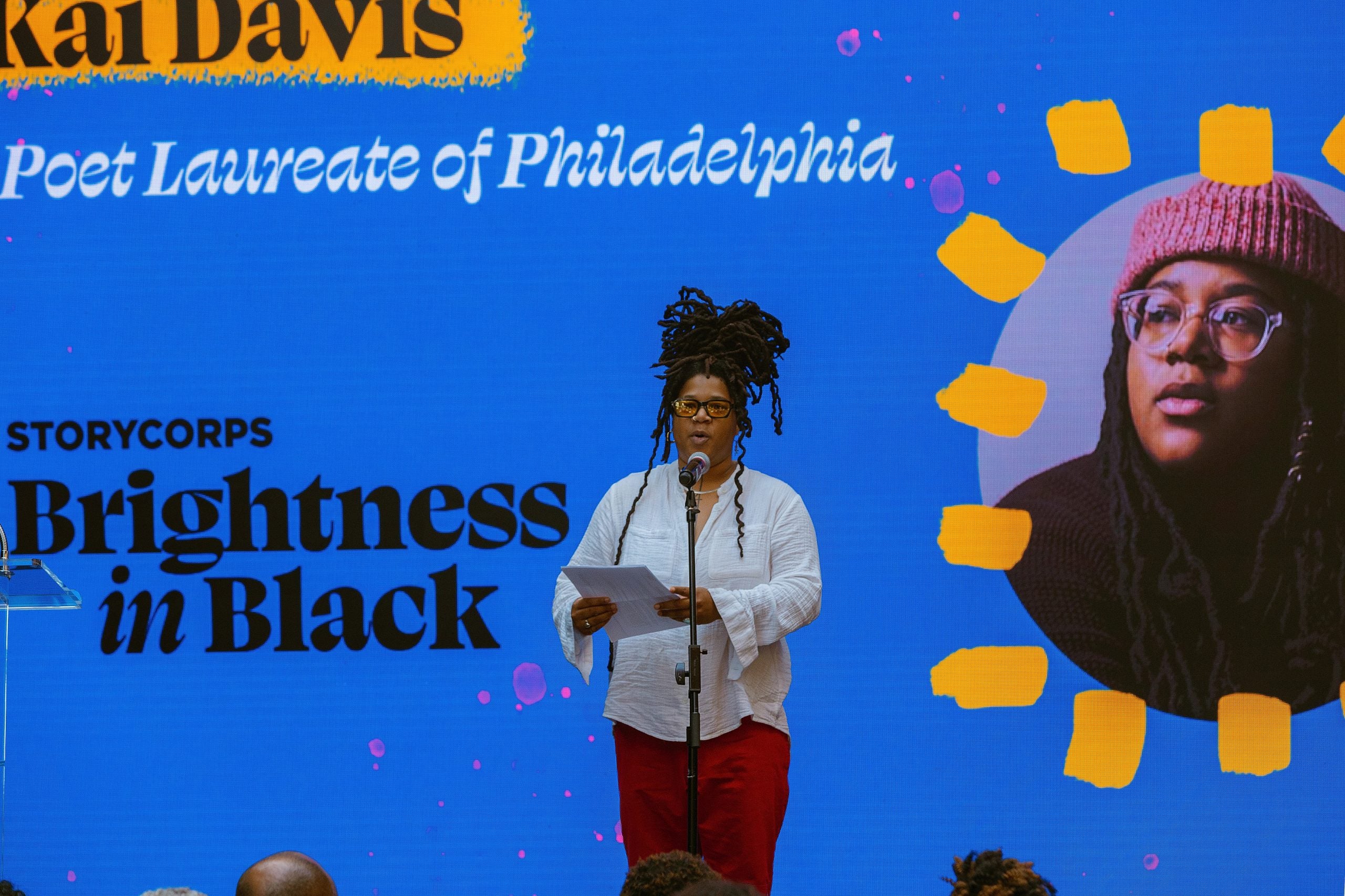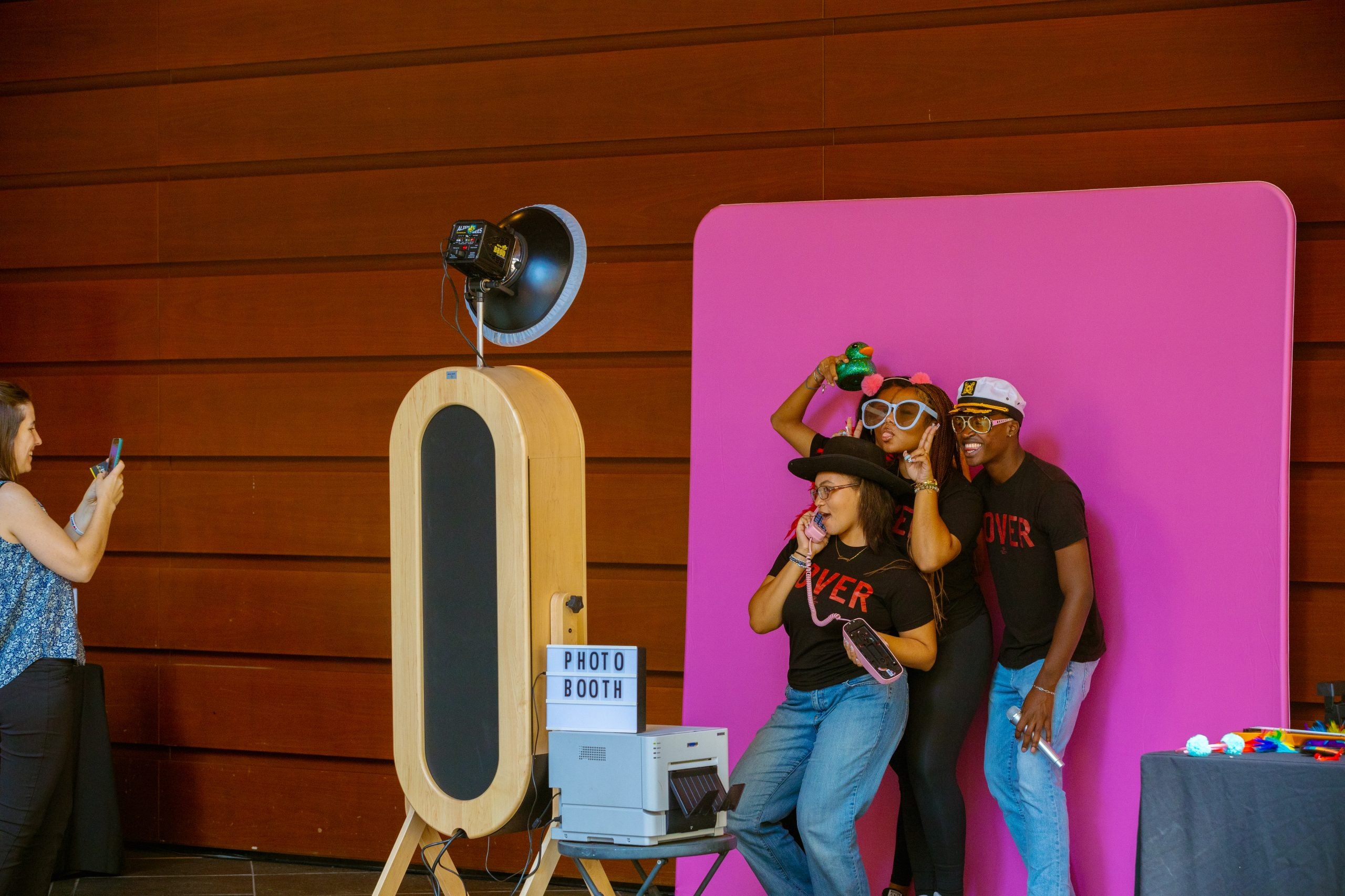
StoryCorps, a national nonprofit dedicated to elevating the voices of everyday individuals, has launched a groundbreaking new initiative, Brightness in Black. In collaboration with Michael Jordan and the Jordan Brand’s Black Community Commitment, this three-year project aims to spotlight Black stories in a way that changes the narrative and celebrates the joy and diverse richness of Black life.
To delve deeper into this multi-year initiative, ESSENCE sat down with StoryCorps CEO Sandra Clark. She emphasized that Brightness in Black goes beyond traditional storytelling and seeks to reshape how Black stories are told and received. Launched in September, the project launched in Philadelphia and Atlanta—two cities deeply rooted in Black culture and history.
Clark began by emphasizing that Brightness in Black is rooted in the core mission of StoryCorps—to let people tell their own stories in their own voices. “StoryCorps, over the last 20 years, has really crossed the country, collecting stories from everyday people. And what we know about those stories is that when people get to tell their own stories in their own voices about what’s most important to them…it becomes a legacy,” Clark shared. “These stories knitted together are the real story of America.”
As Clark explained, this initiative is not just about documenting experiences; it’s about addressing the oversimplified and often negative narratives surrounding Black lives. “Our stories are often oversimplified. The narratives about our lives are often very limited,” she said, reflecting on how Black communities are typically portrayed in media. Brightness in Blackis a chance to flip the script—to focus on the nuance, the joy, and the aspirations that aren’t always given the spotlight.
Brightness in Black officially launched in Philadelphia and Atlanta in September, and Clark explained that choice wasn’t just about demographics; it was about history, community strength, and local partnerships “These cities have such rich Black histories, and the people there are no strangers to the work of changing the narrative,” Clark said.

StoryCorps isn’t just parachuting in and asking people to tell their stories. Clark explained that the project relies heavily on collaboration with community organizations, creatives, and educators in those cities. “We’re working with local partners—organizations and educators who have been doing this work for a long time. They understand the power of storytelling and the importance of capturing the full scope of Black life,” she said.
Through partnerships with HBCUs, community organizations and local creatives, Brightness in Black will begin with storytelling events, recording sessions and workshops designed to engage both individuals and larger communities. “It’s not just about coming in to record stories and leaving,” Clark explained. “We’re creating connections, working with local leaders to make sure this initiative feels deeply rooted in the communities.”
One of the initiative’s key pillars is changing the typical narrative that focuses on struggle. Clark shared that while the difficult parts of the Black experience cannot be ignored, there’s so much more that needs to be highlighted, too.
“We, as Black folks, are so used to telling our stories starting with trauma, difficulty, and hardship. And while those experiences are certainly part of our lives, there’s so much more to our story. Brightness in Black gives us the space to talk about our dreams, aspirations and joy in everyday life. We want to focus on the brilliance of Black life in all its forms,” said Clark.

The initiative includes in-person and virtual opportunities for people to share their stories through the StoryCorps app, community-based storytelling sessions, and StoryCorps Connect, which allows friends and family to record conversations from wherever they are.
Black joy and Black fatherhood are examples of the kinds of stories Clark said the initiative hopes to amplify. So, what happens to all of these powerful stories once shared? The recordings collected throughout the three-year initiative will be archived in the Library of Congress, ensuring that these stories become part of the historical record. Beyond that, the stories will be shared widely—through radio, podcasts, and local events that bring these narratives to life in their communities.
“Narrative change works best when everyone gets to hear the stories,” Clark said. “It’s not just about sharing our stories with each other in Black communities—it’s about the wider world hearing these stories, too. That’s how we shift perspectives.”
Each city involved in Brightness in Black will have opportunities to feature these stories locally, ensuring that the people of Philadelphia, Atlanta and other future cities hear reflections of their own community in meaningful ways. As Brightness in Black continues to roll out over the next three years, Clark is excited about the project’s potential impact. “This isn’t just a collection of stories—it’s a movement to reshape how Black life is viewed and appreciated,” she said.
“We want to make sure that at the end of this initiative, we’ve created a lasting legacy for future generations to look back on and see the full picture of Black life in America.”
